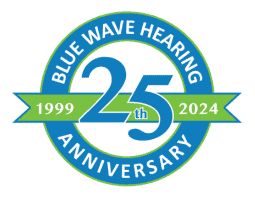- Alcohol and Hearing Health - April 9, 2025
- How Smoking Can Harm Your Ears - March 11, 2025
- Succeeding in the Workplace with Hearing Aids - February 10, 2025
As May comes to a close, we take a moment to reflect on this year’s Better Hearing and Speech Month. An important month in hearing health advocacy, this campaign is organized by American Speech-Language-Hearing Association (ASHA). Better Hearing and Speech Month raises awareness about hearing loss and highlights the options available to support hearing health. This year’s theme is Connecting People which is all about emphasizing the services and resources people can access to better care for their hearing health.
Widespread Inaction on Hearing Loss
Hearing loss is one of the most pervasive health conditions people live with today. Impacting over 48 million people, hearing loss is the third most common chronic medical condition people live with. Though it impacts nearly 1 in 6 people, it remains widely undertreated. In fact, it takes an average of 7 years after first experiencing symptoms for people to seek hearing loss treatment. Recent research published by ASHA reveals just how undertreated hearing loss is.
Researchers examined the scope of untreated hearing loss by polling a nationally representative sample of nearly 2,500 adults. Key findings include:
- 2 in 10 adults have had a hearing test in the past 5 years, compared to 6 in 10 adults who have had their vision tested.
- More than 51% of people reported experiencing hearing issues but only 11% have sought treatment.
- 78% of those with hearing issues have been experiencing these issues for 1 or more years, and over 35% have had trouble for 5 or more years.
These findings reveal the scope of inaction when it comes to hearing loss. Untreated hearing loss can have numerous consequences that take a toll on overall health and wellness. This includes increasing the risk of developing other health issues (depression, cognitive decline), social withdrawal, straining communication and relationships etc. Being able to recognize early signs of hearing loss can help you intervene early.
Common Hearing Loss Symptoms
Hearing loss typically occurs gradually so people may actually not recognize the changes to their hearing for quite some time. Being aware of symptoms can help you identify these changes as changes to your hearing health, motivingating swift intervention. Common symptoms include:
- Tinnitus: a buzzing, ringing, or clicking like noise that can be experienced in one or both ears.
- Responding with “huh” or “what” when others say something.
- Asking others to repeat themselves, speak louder, and/or slower.
- Sounds are slurred or muffled.
- Missing words or parts of a conversation and feeling confused.
- Difficulty hearing especially in environments with background noise.
- Increasing the volume on electronic devices (TV, phone etc.).
- Pretending to hear.
- Being able to hear more easily out of one ear compared to the other.
These symptoms can be mild to severe, producing various effects. This includes straining communication, leading to social withdrawal, affecting relationships, impacting work performance, and taking a toll on social life. These symptoms, if unaddressed, can also worsen impairment.
Take Steps to Prioritize Your Hearing Health Today
Fortunately, there’s an abundance of services and resources you can access to effectively treat hearing loss. The first step is to have your hearing evaluated by a hearing healthcare specialist. Hearing evaluations involve a noninvasive and painless process that measures hearing abilities in each ear. This identifies any hearing loss and the degree of impairment in both ears. Once your hearing needs are established, your hearing healthcare provider is able to develop a treatment plan.
Hearing loss is most commonly treated with hearing aids – medical devices that are designed to absorb, amplify, and process sound. There are a suite of services that help select, fit, and maintain hearing aids which promotes their longevity and usability. This includes a hearing aid fitting which happens after your hearing test. Your hearing healthcare provider will help you navigate your hearing aid options and recommend the device that will optimally meet your needs. A fitting consists of properly fitting and programming your hearing aid to your specific ears and needs.
These are among several comprehensive services that diagnose, treat, and manage your hearing health needs. Accessing hearing healthcare offers countless benefits including transforming your hearing, strengthening communication, improving relationships, and enriching social engagement.


